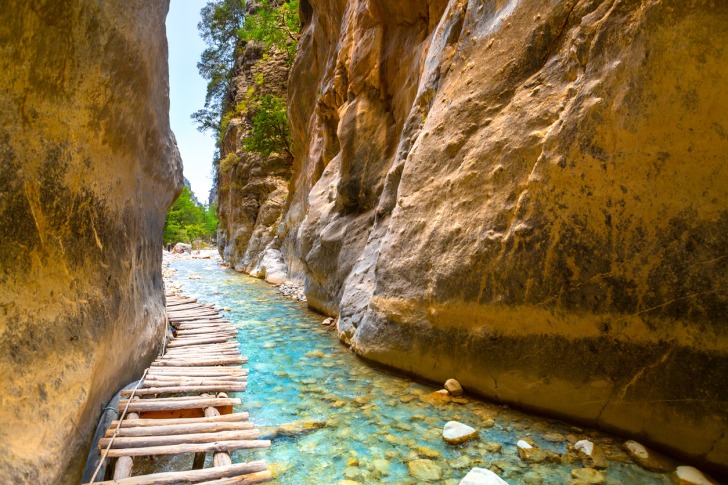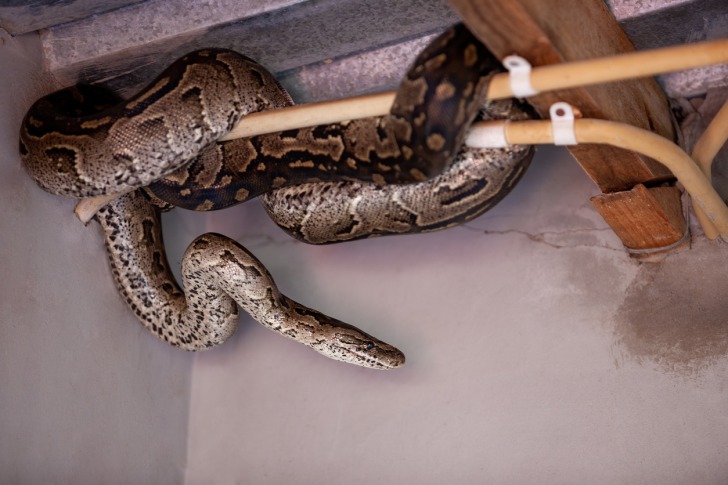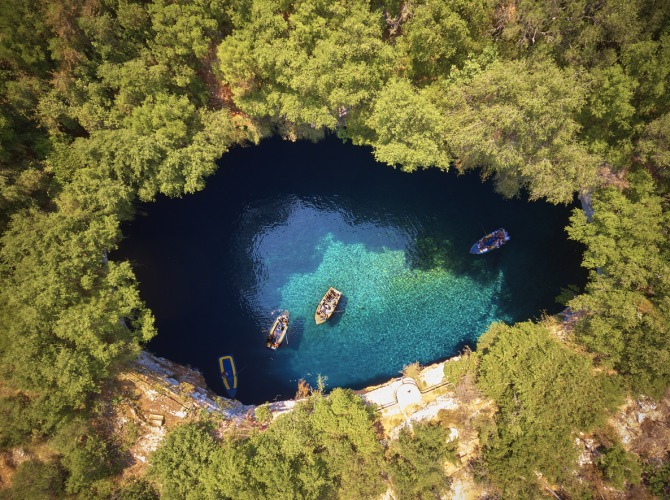When you think of places that have been around since what feels like the dawn of man, Greece is certainly one that comes to mind.
We have written accounts from more than 3,000 years ago.
It’s also a fact that we know people were living in Greece as far back as 6,000 years ago.
With any ancient civilization comes a set of beliefs or stories.
Not only are these stories entertaining, but they were also used to explain things.
This gives modern readers insight into what life was like as well as what people had as their norm.
Greek mythology just so happens to include many references to snakes, or serpents.

Contents
So… Are There Snakes in Greece?
Sure, some things in Greek mythology are not expected to be based on reality.
Looking at you, Typhon.
So, what about snakes?
Well, the fact that there are snakes around now might have tipped off that this one was based on a creature that was slithering around thousands of years ago.
Today, there are over a dozen species of snakes in this Mediterranean country.
Snake Species in Greece
Aesculapian Snake
With a reputation as long as its name, the Aesculapian gets up to six and a half feet long and can live up to 30 years.
Perhaps the size alone was what made this snake take a front row in history for several ancient civilizations.
Balkan Whip Snake
Brown snakes, like this one, blend in easily with the environment.
If you see a Balkan, don’t kill it.
Their numbers have dwindled enough to classify it as a threatened species.
Black Whip Snake
One of the largest snakes in Europe, the black whip snake may look menacing with its black top and fiery underbelly.
However, it is non-venomous.
Common European Adder
These guys have been around long enough to have stories passed down through the ages about them.
Patterned with white and black, adders do what they can to avoid attacking.
Bites hurt but aren’t fatal.
Dice Snake
Also known as a water snake, dice snakes blend in with the rocks in the river.
European Cat Snake
He may look scary because he can climb trees like a cat.
Never fear, thanks to having rear fangs, this snake isn’t a threat to people.
European Rat Snake
You know the saying, “Red and black, you’re OK Jack!”
That’s the sentiment with this guy.
He’s not going to hurt you.
Grass Snake
If the name doesn’t give away this snake’s location preference, nothing will.
What is left out, though, is the grass needs to be close to a body of water.
This snake focuses on eating amphibians.
Green Whip Snake
For up to 20 years, green whip snakes can be prowling around the land.
They are easier to spot with yellow, brown, and tan patterns.
Hemorrhoids Nummifer
These snakes blend in a little too well with rocks in the garden.
They are mostly found in Europe, Central Asia, and North Africa.
Macrovipera Schweizeri
This sandy-colored fellow was named after leading researcher Hans Schweizer.
The Macrovipera likes to hang out, mostly, around the Aegean Sea.
Meadow Viper
These vipers are so rare because they are headed toward extinction.
That’s despite the fact they are in most of Europe, the Middle East, and China.
Nose-Horned Viper
The only poisonous snake in Greece is this one.
It prefers to hang out in rocky places so, hopefully, that keeps people from getting close enough to meet.
Ottoman Viper
Ottoman Vipers blend in splendidly with the yard, specifically with dirt and rocks.
There are tons of these guys throughout Europe, and they live to be about 16 years old.
Smooth Snake
Living for 30 years, smooth snakes are found in Central Europe through Iran.
Vipera Ammodytes Meridionalis
There is not an overwhelming pile of info on this snake.
The most common bit of info refers to where the Vipera prefers to reside, which is in Greece and Turkey.
Xerotyphops Vermicularis
This snake is often referred to as a worm snake, which makes sense when you see it.
Typical snakeskin might slow it down, as this guy’s favorite place to hang out is in the soil.
Not only does it look like an overgrown worm, but it is also blind.
The Xerotyphops is the only one of its kind found in Europe.

Is it Safe to Go on a Trek in Greece?
Yes, but proceed with caution.
As long as you’re paying attention and staying on the designated routes, there should be no problems.
If you decide to go gallivanting through the grass, that might be a different story.
Otherwise, there’s no reason to fear getting out in nature anywhere in Greece.
Interesting Snake Facts in Greece
Out of all the snake species calling Greece home, only one could take you down.
The adder is poisonous but rarely fully takes the life of a victim.
Of course, if you are allergic, that could take out anyone.
Once upon a time, snakes were used for healing.
Asclepius, the god of medicine, had a staff with a snake wrapped around it.
Today, a snake is still a symbol in the medical profession.
3 Safety Tips for Exploring Nature in Greece
1. Stay on Paths
After reading through the list of snakes in Greece, you might have noticed a pattern.
Many of these serpents not only blend in with their surroundings but also prefer to be on the grass, soil, or rocks.
They are also less likely to come after you if you are on a path because that’s not where they like to hang out, anyway.
2. Pay Attention
Yes, we did say staying on paths would make it less likely to be open to an attack.
However, we would be remiss if we did not point out that it doesn’t hurt to keep a keen eye on the path ahead.
The terrain should be clear, but you never know when a snake might slither across to get to more grass on the other side.
3. Do Not Engage
If you do happen to cross paths with a snake despite being careful, stop where you are.
The truth is that snakes will always want to avoid you unless they feel threatened.
As soon as you recognize the movement, go out of your way to avoid the snake.
Summary
So, yes, there are snakes across the Greek islands.
However, no, you shouldn’t be worried about it.
Snakes are a part of life and the locals are used to that fact.
Tourism accounts for about 20% of Greece’s economy.
If snakes were a problem, that number would be sufficiently low.
Almost all snakes in Greece avoid humans and won’t kill you if they bite.
Greece Safety Overview
READ THE FULL REPORT: Greece Safety Review
Safety Index:
- OVERALL RISK: LOW
- TRANSPORT & TAXIS RISK: LOW
- PICKPOCKETS RISK: MEDIUM
- NATURAL DISASTERS RISK: MEDIUM
- MUGGING RISK: LOW
- TERRORISM RISK: LOW
- SCAMS RISK: MEDIUM
- WOMEN TRAVELERS RISK: LOW
Frequently Asked Questions
Are snakes a problem in Greece?
Not really.
Sure, they do exist and can be out in abundance.
That doesn’t mean they pose a threat.
They want to keep just as much distance from you as you do from them.
Do all the Greek islands have snakes?
There is one that is known to have not had any since antiquity.
Astypalaia was even noted by Aristotle for not having snakes.
What snakes lived on Medusa?
Speaking of Greek tragedies, Medusa had the very unfortunate responsibility of housing mating vipers.
It was said that the mating vipers were the most volatile of all snakes.
The male would have its head bitten off after impregnating the female.











